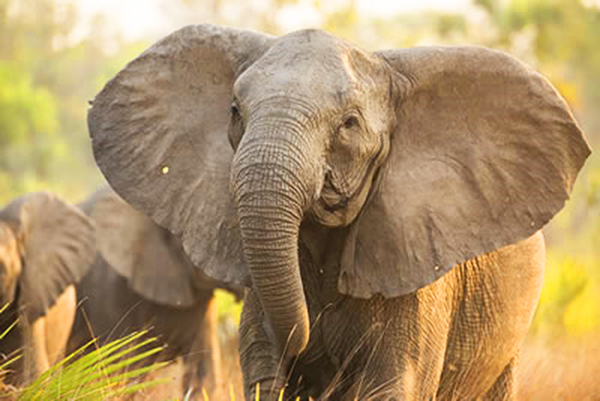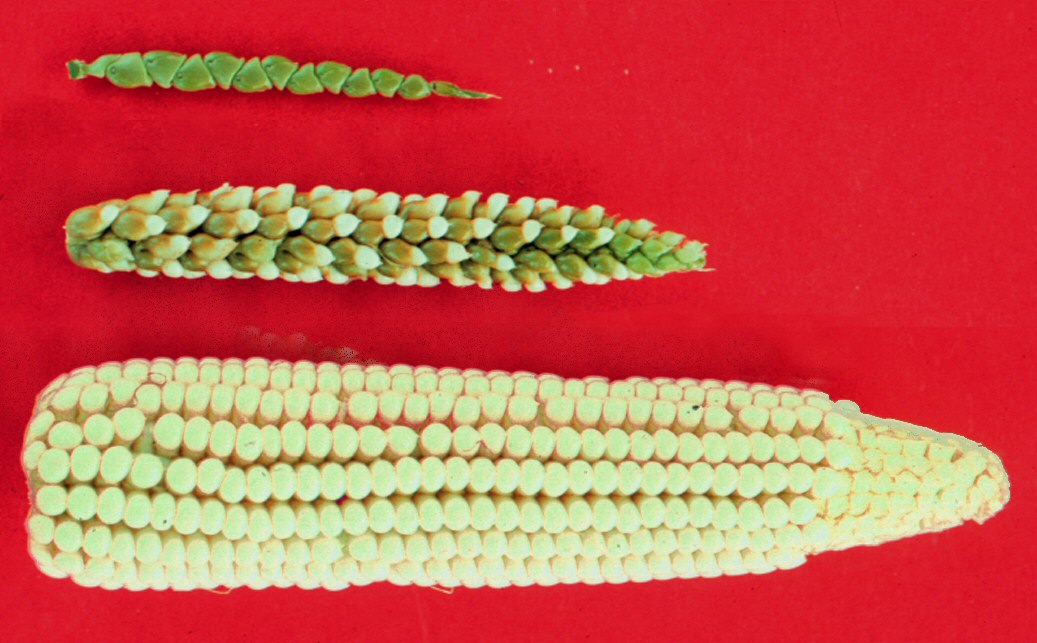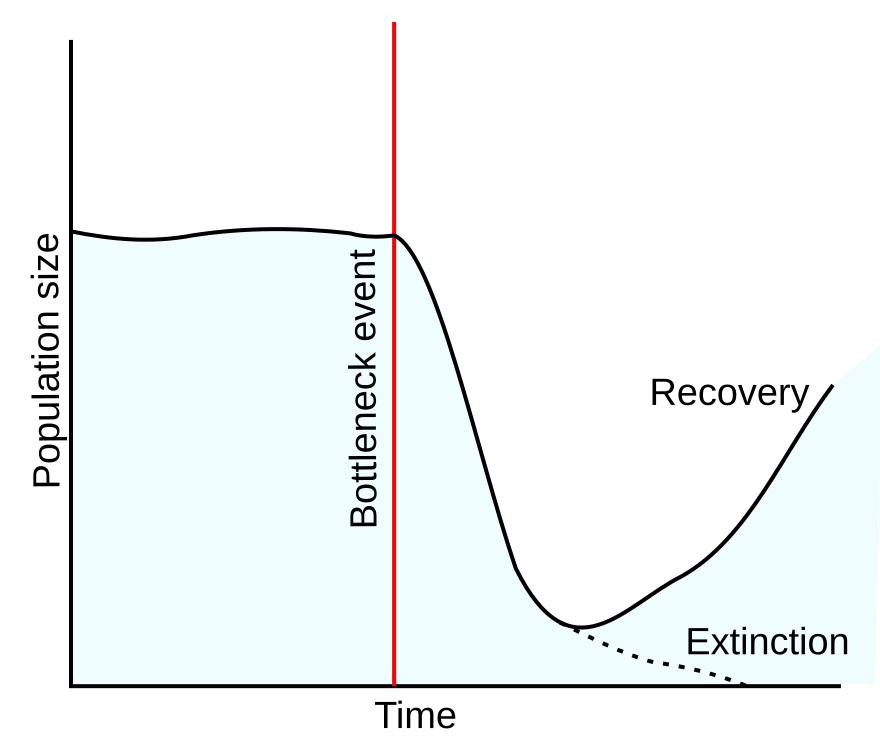IB Syllabus focus:
‘Human activities alter selection (e.g., climate change, hunting), driving rapid evolution such as tuskless elephants. Artificial selection narrows genetic diversity, reducing resilience; conserving diversity has ecological and economic value.’
Humans profoundly shape evolution through direct and indirect pressures. By altering selection processes, humanity influences species survival, adaptation, and diversity, with consequences for ecosystems and societies.
Human-Driven Selection
Natural Versus Human Pressures
In nature, evolution occurs through natural selection, where traits that confer survival advantages become more common over generations. Human-driven selection differs because external pressures are introduced by anthropogenic activities such as hunting, climate change, and pollution. These factors rapidly alter survival pressures, often more quickly than species can adapt.
Climate change modifies habitats, forcing species to adjust their physiology, behaviours, or ranges.
Overhunting and poaching can favour traits that help individuals avoid detection or survival, leading to rapid evolutionary shifts.
Pollution and urbanisation create novel selection pressures, encouraging traits tolerant of toxins, noise, or light.
Example: Tuskless Elephants
One widely cited case is the rise of tuskless elephants. Heavy poaching for ivory in regions of Africa increased the survival rate of tuskless individuals. Over generations, the frequency of tusklessness rose, showing how human activity can reshape species characteristics in a few decades.

Female African elephants in heavily poached populations have shown increased rates of tusklessness, a heritable trait favoured when ivory-bearing individuals are selectively killed. This image shows a tuskless matriarch in Gorongosa National Park, exemplifying rapid, human-driven selection. Source.
Artificial Selection and Domestication
Domestication Processes
Humans have intentionally shaped species through domestication for thousands of years. This process involves selectively breeding plants or animals to enhance traits beneficial to humans such as yield, size, docility, or appearance.
Domestication: The process by which humans selectively breed species to accentuate desirable traits, leading to significant genetic and behavioural changes from their wild ancestors.
Consequences of Artificial Selection
Artificial selection often reduces genetic diversity because a limited gene pool is maintained. This can result in vulnerabilities:
Increased susceptibility to disease outbreaks.
Reduced adaptability to climate change or environmental variation.
Loss of resilience in ecosystems when domesticated species replace wild relatives.
Examples include monoculture crops like bananas or maize, which are highly productive but genetically uniform, making them vulnerable to pests and pathogens.

Comparison of teosinte (top), teosinte–maize hybrid (centre), and domesticated maize (bottom) illustrating strong artificial selection during domestication. Phenotypic changes reflect repeated human selection for larger, more accessible kernels and improved yield. Source.
Rapid Evolution Under Human Influence
Mechanisms of Change
Human-driven selection influences species in several ways:
Directional selection: Hunting or culling targets specific traits, shifting the population’s genetic profile.
Disruptive selection: Human disturbance may favour extremes of a trait while reducing intermediates.
Gene flow and hybridisation: Introduced species can interbreed with native populations, altering genetic structures.
These processes occur more quickly than in natural systems because humans create intense, immediate pressures.
Urban Evolution
Urban areas serve as laboratories of human-driven evolution. Birds adapting to artificial light cycles, insects evolving pesticide resistance, and rodents developing tolerance to human-provided food sources illustrate rapid adaptation in anthropogenic landscapes.
Conservation Implications
Loss of Genetic Diversity
Genetic diversity is vital for population resilience. It enables species to adapt to changing environments, recover from disturbances, and maintain healthy ecosystem functioning.
Genetic diversity: The total number of genetic characteristics in the genetic makeup of a species, ensuring variability and adaptability within populations.
Artificial selection often reduces genetic diversity because a limited gene pool is maintained.

Diagram of a population bottleneck showing how a sharp reduction in numbers can eliminate alleles and lower genetic variation, constraining future adaptability. While this is a general evolutionary concept, it directly supports the syllabus statement that artificial selection narrows genetic diversity and reduces resilience. Source.
Ecological and Economic Value
Maintaining genetic diversity has dual benefits:
Ecological value: Diverse populations contribute to ecosystem stability, productivity, and resilience.
Economic value: Diverse genetic resources underpin agriculture, medicine, and biotechnology, providing raw material for breeding programmes and innovation.
Conservation Strategies
To counteract human-driven narrowing of genetic diversity, conservation programmes must prioritise maintaining wide genetic pools:
Seed banks preserve crop varieties for future use.
Captive breeding with careful genetic management prevents inbreeding depression.
Habitat conservation ensures wild populations retain evolutionary potential.
Human-Driven Selection in a Global Context
Anthropocene Pressures
The current epoch, sometimes termed the Anthropocene, highlights the overwhelming impact of human activity on global systems. Selection pressures created by humans are driving unprecedented rates of evolutionary change and species extinction simultaneously. Some species adapt and thrive, while others cannot cope and decline.
Balancing Use and Conservation
Domestication and artificial selection continue to provide essential food, clothing, and companionship for human societies. However, balancing these benefits with conservation of wild genetic diversity remains a critical challenge. Ensuring sustainable use requires:
Regulation of overexploitation.
Integration of indigenous knowledge into conservation practices.
Global cooperation in protecting biodiversity hotspots.
Key Takeaways for IB ESS Students
Human-driven selection reshapes evolutionary processes, often rapidly and with widespread ecological consequences.
Domestication and artificial selection provide benefits but reduce genetic diversity and resilience.
Conserving genetic diversity is essential for ecological stability and long-term human economic security.
Biodiversity must be managed through conservation strategies that preserve genetic resources at both local and global scales.
FAQ
Human-driven selection often occurs much more rapidly because pressures such as poaching, pesticide use, or selective breeding create intense and immediate survival challenges. Natural selection typically operates over many generations, whereas human-driven changes can be visible within a few decades or even years.
Artificial selection can trap populations in a genetic bottleneck, limiting their ability to adapt to unforeseen changes.
Diseases can spread quickly through genetically uniform populations.
Environmental changes may cause sudden widespread failure.
Traits prioritised for human benefit may reduce fitness in natural settings.
Genetic diversity in crops provides resilience against pests, diseases, and climate fluctuations. Without it, food systems face instability.
Farmers rely on wild relatives of crops for traits such as drought resistance or disease tolerance, which can be bred back into domesticated varieties. Seed banks and gene banks therefore act as vital insurance policies for global food security.
Yes, in some cases domestication can enhance resilience if breeders intentionally introduce diverse traits.
For example:
Cross-breeding crop varieties to combine pest resistance and high yield.
Maintaining heritage breeds of livestock that can survive in harsh environments.
However, this requires careful management and a commitment to preserving variability rather than narrowing it.
When traits shift due to human pressure, ecosystem interactions change.
Tuskless elephants may alter forest composition because their feeding behaviour differs.
Selective hunting can change predator–prey dynamics.
Domesticated species replacing wild relatives can disrupt food webs and reduce ecological balance.
These ripple effects show that human-driven selection is not just about species but entire ecosystem functions.
Practice Questions
Question 1 (2 marks)
Explain how poaching has influenced the frequency of tuskless elephants in certain populations.
Mark scheme:
1 mark for identifying that poaching targets elephants with tusks.
1 mark for explaining that tuskless elephants therefore have a survival advantage and pass on the trait more frequently.
Question 2 (5 marks)
Discuss how artificial selection during domestication can reduce the resilience of species, using an example.
Mark scheme:
1 mark for stating that artificial selection reduces genetic diversity.
1 mark for linking reduced diversity to increased vulnerability to disease or environmental change.
1 mark for explaining that a limited gene pool reduces adaptability to new conditions.
1 mark for providing an appropriate example (e.g., maize, bananas, domesticated animals).
1 mark for clearly linking the example to the loss of resilience (e.g., monocultures being highly vulnerable to pests).

